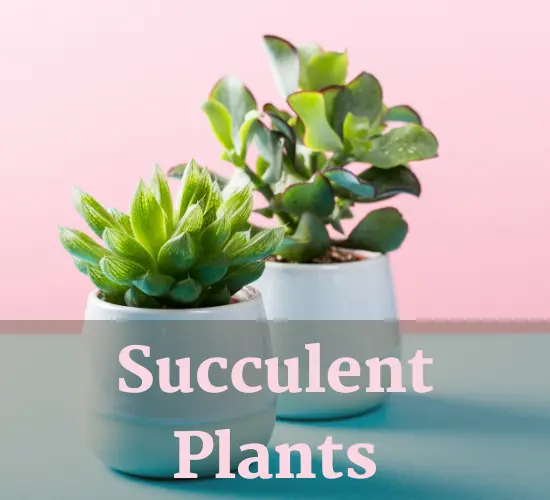Table of Contents
Why Are My Succulent Leaves Turning Yellow and Soft?
Succulents are often praised for their ease of care, but even the most resilient of plants can suffer from yellowing and rotting. These issues can be caused by a variety of factors, including overwatering, lack of light, extreme cold, and pest infestations.
In this article, we will explore the common causes of succulent yellowing and rotting and provide tips for preventing and treating these issues.
Proper succulent care is essential for preventing yellowing and rotting. It is important to understand the unique needs of each type of succulent, including its watering and light requirements. Additionally, pests such as mealybugs and spider mites can wreak havoc on succulents if left untreated.
By following our succulent guide, you can learn how to properly care for your plants and prevent yellowing and rotting. Whether you are a seasoned plant parent or just starting out, this article will provide valuable information for keeping your succulents healthy and thriving.
Key Takeaways

- Proper care is essential to prevent yellowing and rotting in succulents, including understanding their unique needs.
- Overwatering is a common mistake leading to root rot and yellowing leaves, while lack of light and extreme cold can also cause damage.
- Pests like mealybugs and spider mites can harm succulents if left untreated, and natural remedies like neem oil or insecticidal soap can be used for treatment.
- Succulents require well-draining soil that allows air circulation around the roots, and propagation can be done by taking stem or leaf cuttings and rooting in well-draining soil.
Causes of Yellowing Leaves
Yellowing leaves in succulents can be caused by various factors such as overwatering, lack of light, extreme cold, and pest infestations, as mentioned in the pre-existing knowledge.
One of the most common mistakes that succulent owners make is overwatering their plants. Succulents are adapted to arid environments and their roots are designed to store water. Overwatering can lead to root rot and cause the leaves to turn yellow and feel mushy. Signs of overwatering include wilting, yellowing leaves, and a soft, mushy stem.
Lack of light can also cause succulent leaves to turn yellow and become soft. Succulents need at least 6 hours of direct sunlight per day to thrive. If they are not getting enough light, they will stretch out and become leggy, and their leaves may turn yellow and feel soft.
Extreme cold can also damage succulent leaves, especially if the temperatures drop below 45°F.
Pests such as spider mites, mealybugs, and scale can also cause yellowing leaves in succulents. It is important to treat pest infestations as soon as possible to prevent further damage to the plant.
Tips for Succulent Care

To ensure optimal growth and health of succulents, it is essential to provide them with at least six hours of direct sunlight per day and to allow the soil to completely dry between watering.
Succulents are adapted to thrive in dry, arid environments, and overwatering can lead to root rot and yellowing of the leaves. To prevent this, water the plant only when the soil is completely dry, and discard any excess water.
Choosing the right soil is also important for succulent care. They require well-draining soil that is porous and allows for air circulation around the roots. A soil mix specifically formulated for succulents and cacti, or a mixture of regular potting soil and coarse sand or perlite, can be used.
Propagating succulents is an excellent way to expand your collection and can be done by taking stem or leaf cuttings and allowing them to root in well-draining soil.
Finally, decorating with succulents can add a touch of natural beauty to any space. Creative display ideas include using unique containers, such as teacups or hollowed-out logs, and arranging succulents in clusters for a visually striking effect.
Pest Control and Treatment
Pest control and treatment are crucial aspects of succulent care and involve identifying and addressing insect infestations with appropriate measures.
Common pests that can harm succulents include spider mites, mealybugs, and scale, which can cause yellowing leaves and weaken the plant.
Natural remedies like neem oil or insecticidal soap can be used to treat these pests and prevent further damage.
It’s important to note that weakened or stressed plants are more susceptible to insect infestations, so maintaining proper care is key to preventing pest problems in the first place.
If natural remedies are not effective, professional pest control services may be necessary.
These services can provide targeted treatments to eliminate pests and prevent further damage to the plant.
It’s important to choose a reputable pest control service and follow all instructions carefully to ensure the safety of the plant and anyone in the surrounding area.
With proper pest control and treatment, succulents can thrive and continue to bring beauty to any space.
Frequently Asked Questions
How often should I fertilize my succulent?
Fertilizer frequency for succulents depends on the soil type and the plant’s growth stage. Generally, succulents require low-nitrogen fertilizers applied once a month during the growing season. Over-fertilization can cause root burn and damage to the plant.
Can succulents be grown indoors?
Succulents can be grown indoors under the right conditions. Adequate sunlight, proper watering techniques, and well-draining soil are crucial. Avoid overwatering and ensure the soil is completely dry before watering again.
How do I know if my succulent is getting enough sunlight?
Sunlight assessment is crucial for succulent health. Place them in a bright spot and observe if they receive at least six hours of direct sunlight per day. Adjust the placement accordingly to prevent underexposure or scorching.
Can I propagate a succulent that has yellow leaves?
Propagating yellow succulents can be challenging as the yellowing indicates stress or disease. Reviving yellow succulents is the first step, followed by removing healthy leaves and allowing them to callus before planting. Patience and proper care are crucial for success.
What should I do if my succulent is wilted and drooping?
When a succulent is wilted and drooping, it may be due to overwatering, underwatering, or other stressors. Reviving techniques include adjusting watering techniques, providing adequate light, and addressing any pest issues.
Conclusion
Succulent yellowing and rotting can be caused by a variety of factors such as overwatering, lack of light, extreme cold, and pests. To prevent these issues, it is crucial to follow proper succulent care guidelines, including watering and light requirements, as well as pest control measures.
Following the tips and guidelines provided in this article, the owner can adjust their watering habits and provide proper light and care for their succulent.
In conclusion, preventing succulent yellowing and rotting requires proper care and attention. By following the tips and guidelines outlined in this article, succulent owners can ensure their plants thrive and avoid common issues.